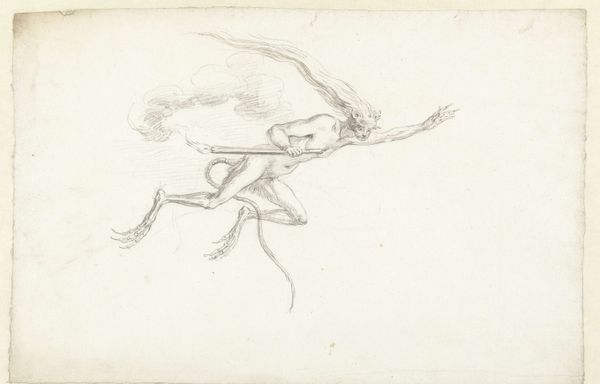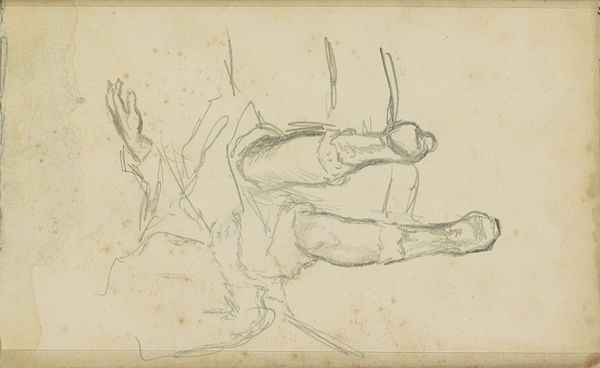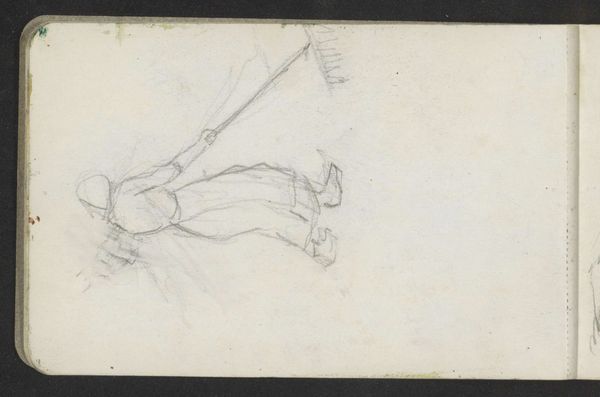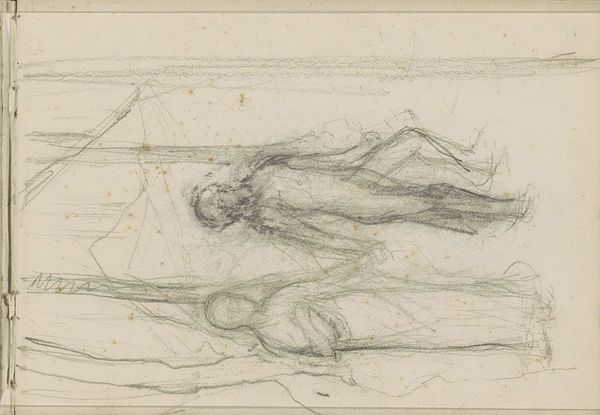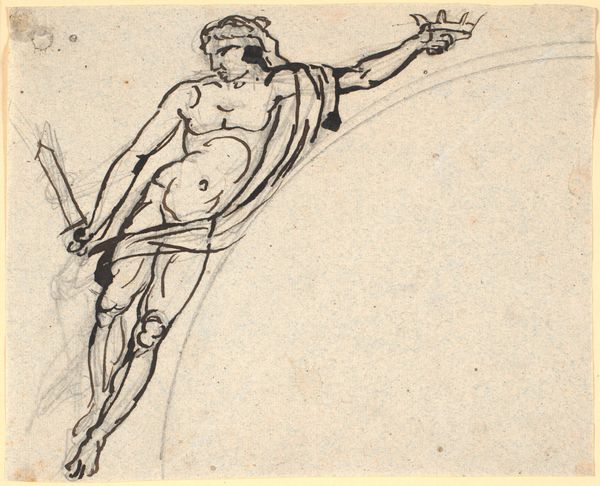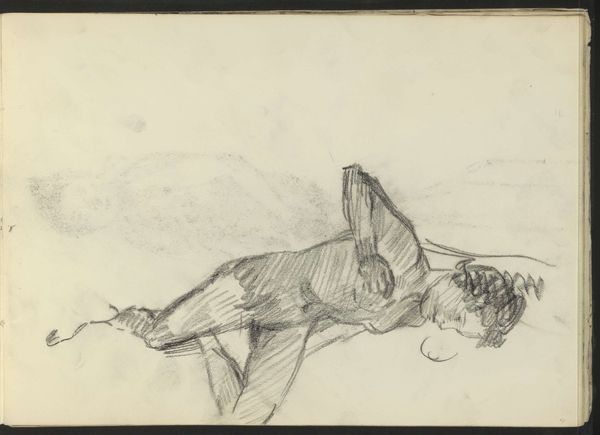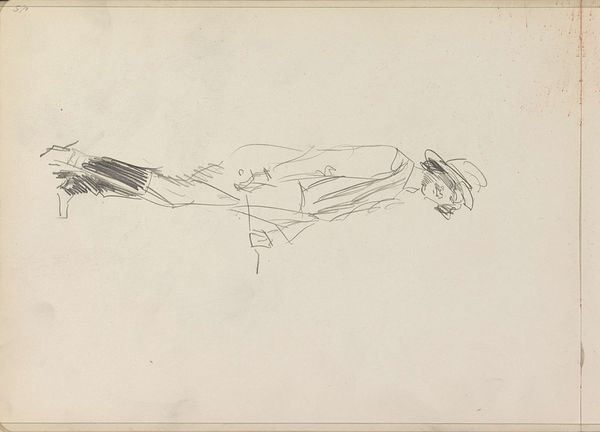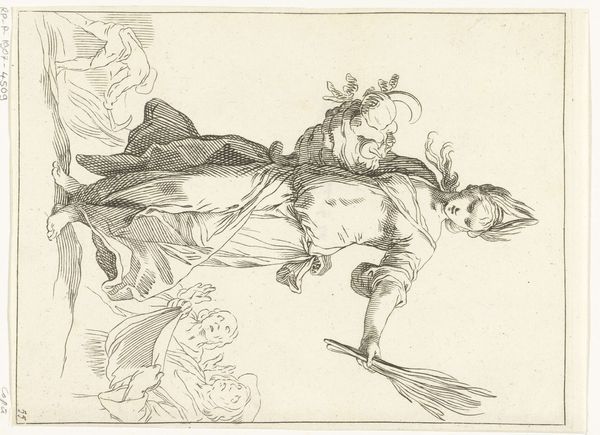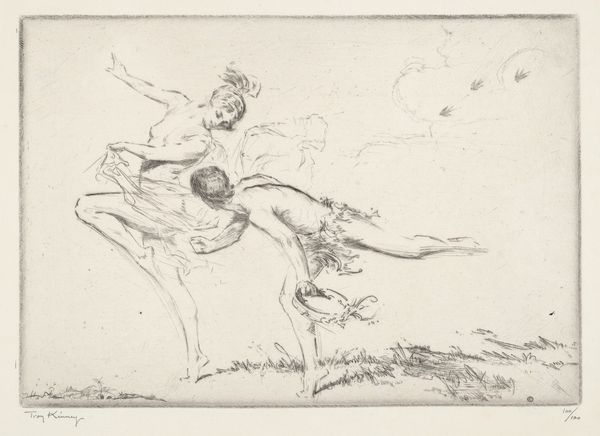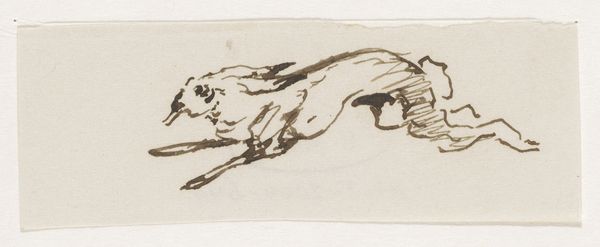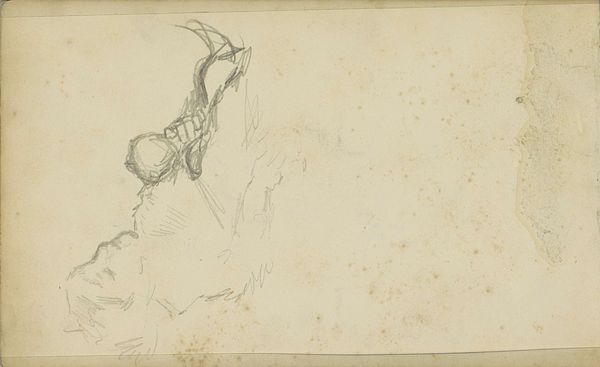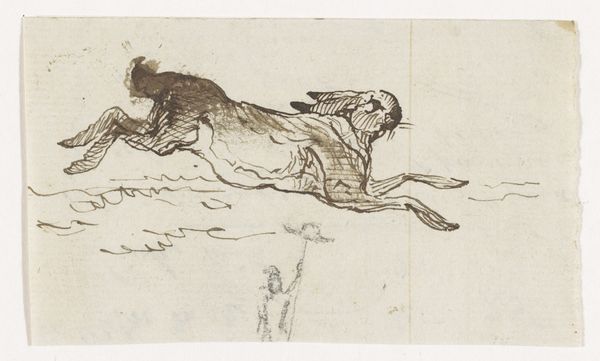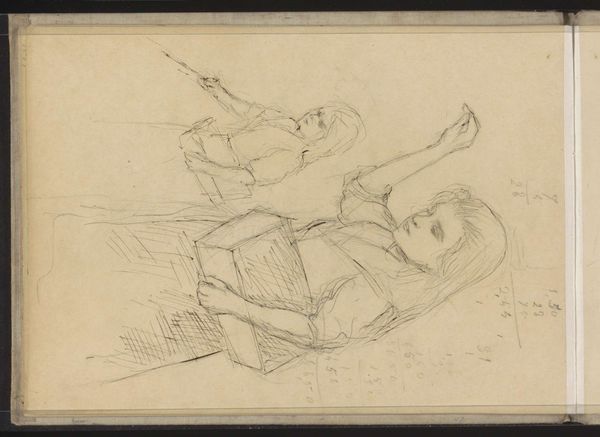
drawing, paper, pencil
#
portrait
#
drawing
#
toned paper
#
light pencil work
#
baroque
#
pen sketch
#
pencil sketch
#
landscape
#
fantasy-art
#
figuration
#
paper
#
personal sketchbook
#
ink drawing experimentation
#
pen-ink sketch
#
pencil
#
sketchbook drawing
#
genre-painting
#
sketchbook art
#
fantasy sketch
Dimensions: height 296 mm, width 455 mm
Copyright: Rijks Museum: Open Domain
Curator: This captivating sketch is titled "Monsterlijke heks op een bezem", or "Monstrous Witch on a Broom," by Cornelis Saftleven. It was rendered sometime between 1617 and 1681. Editor: Intriguing! It feels unsettling and otherworldly. The delicate lines give it an ephemeral quality, as if this creature might vanish at any moment. The grayscale palette contributes to the sense of unease, emphasizing the starkness of the figure against the bare paper. Curator: Indeed. Saftleven employed pencil, pen, and ink on toned paper, an interesting combination of readily available materials. I see this piece within the context of the rising print culture and fascination with the occult during the period. Consider the widespread anxieties surrounding witchcraft; this drawing could reflect, and perhaps even reinforce, prevailing superstitions about labor, gender and marginalization in a rapidly changing society. Editor: The tonal variations are quite compelling, aren’t they? Notice how the artist models form with subtle gradations, creating depth and volume, particularly around the figure’s torso and legs. And consider the composition – the dynamic diagonal of the broom bisects the space, drawing our eye from the witch's grotesque face all the way along the trajectory of her flight. The artist balances detailed work like the rendering of the hands and feet with open negative space that seems charged with some undefined magic. Curator: I'm also drawn to the seeming contradiction in this piece. Saftleven presents a grotesque, monstrous figure, yet uses very accessible media. Was it created as a finished piece? Or more likely an expressive, perhaps subversive, exercise? What commentary might he be making on laboring class and the access to the print trade? Editor: The lines are economical yet evocative, and contribute a certain graphic power. What do you make of the wings? They feel somewhat vestigial. Curator: Perhaps symbolic? These types of wings seem to carry clear markers for both humanistic and diabolical symbolism from the time. Editor: Regardless, it all amounts to a small but visually arresting composition that uses form to create powerful emotive impact, reflecting both the inner demons and fears of a period and place. Curator: Yes, it invites us to reflect on both the artist’s and the broader culture's understanding and depictions of so called 'monstrous' beings within the economic conditions of his day. It leaves me wondering about the lived experience and beliefs about magical labour within Saftleven's cultural moment.
Comments
No comments
Be the first to comment and join the conversation on the ultimate creative platform.
